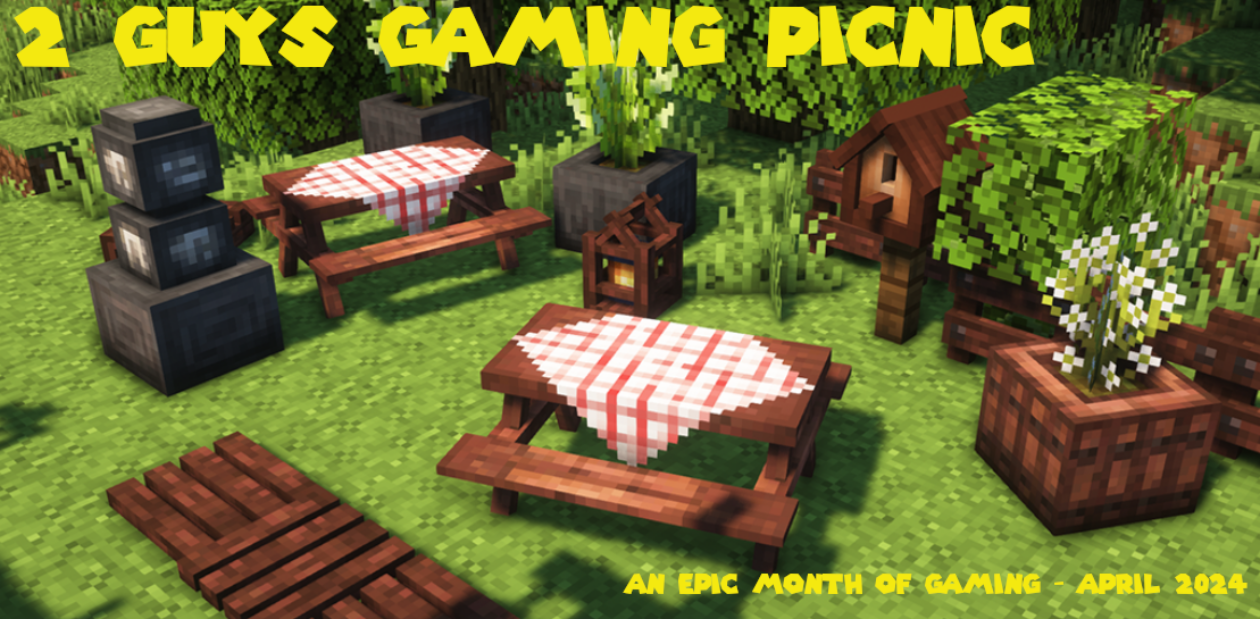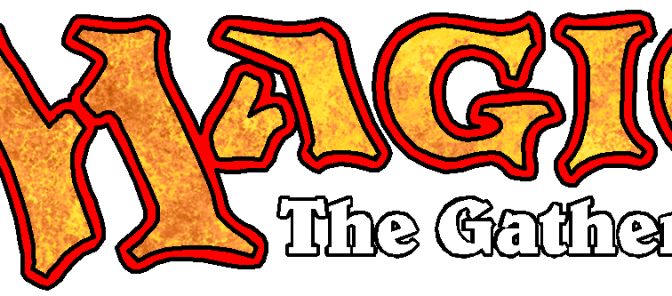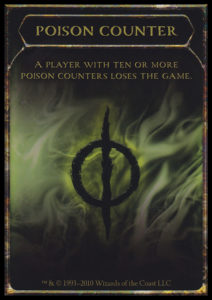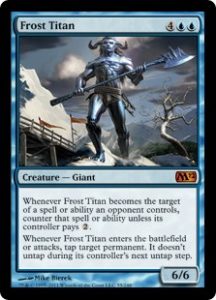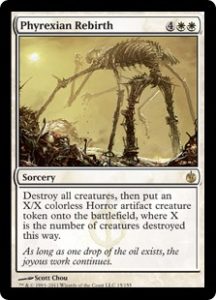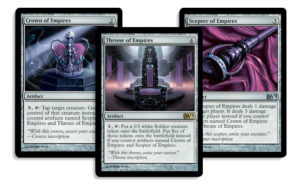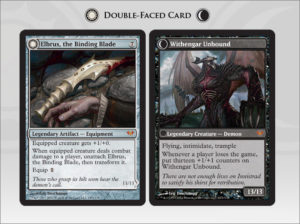Note: This is part 3 of a 5 part series.
Introduction
This is the time in Magic the Gathering history when the game was supposed to change forever. They made an announcement that there would be no more core sets. Admittedly, I don’t always have my finger on the pulse of various communities, but I never heard a huge outcry during the announcement. Granted, as a collector, I mourned the loss of those sets, but I’m not sure that many others did.
Aside from that, they reduced the number of sets for each block from 3 sets to 2. In response to this announcement, I did hear quite a bit of murmuring from the crowd. Perhaps it was a bridge too far so soon after the abolition of core sets. As we’ve discussed several times, some portions of the nerd community have become resistant to change. Furthermore, they are quite vocal about it.
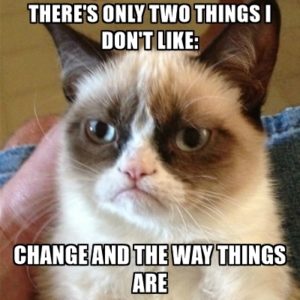
Magic the Gathering Origins and Competitive Play
In the previous two articles, I’ve included the core set with the block. I change that here for two reasons. First, with the core sets being discontinued, WotC assured us that there wouldn’t necessarily be “blocks” of sets anymore, even though there were for the next six cycles. Second, since Origins was supposed to be the “last” core set, they promised something innovative for the set.
As with most of WotC’s promises, this wasn’t entirely true. While there were some new things in the set that I will talk about briefly, at it’s heart, Origins was a core set. I think in my article about it, I called Origins the “corest of core sets”. I don’t blame them. Core sets existed for a reason. If you’re going to have core sets, then it should fulfill that purpose. Just don’t promise that you’re going out with a bang and then offer a slightly exaggerated whimper.
Okay, enough of my own “Grumpy Cat” impression. As I said, there are things that I enjoyed about the set. Before I get to those, I will just write a quick note about competitive. I’m not a competitive player by any stretch of the imagination. I don’t aspire to be one either. I do enjoy watching Magic, though, and this set was very kind to competitive players.
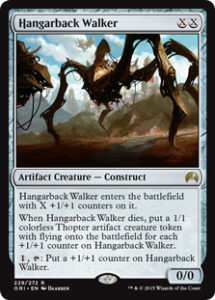
My Thoughts on MtG Origins
Finally, we get to my positives from the set. Not to give too much away, but they’re what you have come to expect from a filthy casual such as myself. I might be mistaken here, but it’s the first time that I noticed that WotC made the story front and center in the game. I know that there has always been lore. It’s one of the things that we love about Magic. But, this is the first time that I saw them pushing that story on their web page and through the cards. That story focused around five main Planeswalkers and their journey through Magic history.
Speaking of those Planeswalkers, they lived up to the promise of “something different”. None of them start off as Planeswalkers. Instead, they are cast as younger versions of themselves. Then, through a mechanic associated with their color identity, they “gain their spark” and flip to become a Planeswalker. There has been at least one other flip Planewalker since, but this was like nothing that I have ever seen in the game before this set. I don’t know if they have plans to do so, but I would love to see more cards like this in the future.
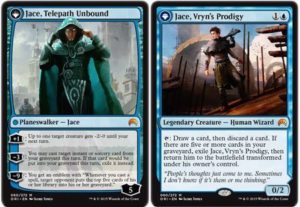
Battle for Zendikar/Oath of the Gatewatch
I have to admit that I was surprised when they announced this group of sets. While the first Zendikar block might have been popular at the time, the only thing that I ever heard from players was how much they hated the Annihilator mechanic. Wizards of the Coast even publicly admitted that Annihilator might have been a mistake. I think I wrote in my previous article that we haven’t been back to Mirrodin, mostly likely because of infect. But, now, we’re back in Zendikar with an even less interactive mechanic? Okay. Let’s do this.
Yes, the Eldrazi are back. No, they don’t have Annihilator. Most of them don’t have Annihilator. Okay, none of them have Annihilator, but Ulamog is hungry and he wants to eat your deck. In keeping with the colorless theme, this set has colorless colored cards. Yeah, I know. For a game that prides itself on its adherence to logic, that might be a tough circle to square. Hear me out on this one, though. I mentioned earlier that WotC was choosing to incorporate lore more into the game. The Eldrazi are colorless creatures that consume all in their path. Zendikar is a rich source of resources. It makes sense that as the Eldrazi consume Zendikar’s resources, there would be those that were in the process of being converted.
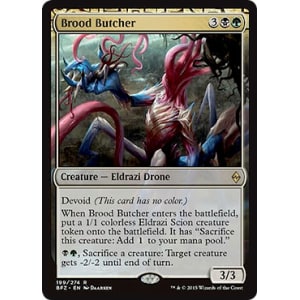
Maybe I thought too much thought into that. I’m sure that I put too much thought into it. Okay, I’m positive that I thought about that way too much. But, it was a fun train of thought for me and who knows? Maybe I’m on to something.
Back to the sets themselves. You can’t just have colorless spaghetti monsters (Actually, she’s not even here. More on her in the next section. Spoiler Alert.) destroying all in their paths. Well, you could, but that’s not much of a narrative. In addition to the old mechanic of landfall to symbolize the land itself fighting back, there’s also a mechanic called converge that pumps the ability of cards based on the different types of mana used to cast them. Multicolored v. colorless. Great flavor win!
Shadows Over Innistrad/Eldritch Moon
If it was a surprise that we returned to Zendikar, it was a relief to go back to Innistrad. I said several times in my previous article that Innistrad was right in my wheelhouse. If you haven’t read that article, I will summarize here. Having grown up with fantasy and fantasy horror, Innistrad reminded me of times playing the D&D campaign Ravenloft with friends as a teenager. The addition of flip cards, the lore win of graveyard interaction, and a strong story overall cemented Innistrad as one of my favorite blocks. I’m glad to be back.
Okay, but what are those shadows over Innistrad? Who knows? Who cares? It’s probably just witches or giant bats or something like that. It’s certainly not a giant spaghetti monster that has come to consume this plane that we all love. To be honest, I had no idea during the first set that there would be Eldrazi on Innistrad. I mean, I did find it odd that Emrakul was missing from Zendikar, but I wasn’t paying full attention to the story at the time. I was just happy to be back on Innistrad.
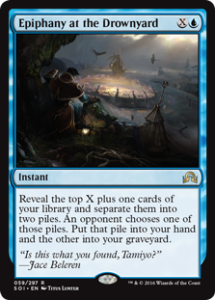
You got Eldrazi in my zombies! You got zombies in my Eldrazi! Two disgusting things that go great together? I admit that it was a complete surprise when the reveal of Eldritch moon showed that much of the madness on the plane was courtesy of Emrakul’s influence. I wasn’t sure how the crossover might work and felt skeptical that it would be any good. I’m happy to have been proven wrong. While not as strong as the other Innistrad sets, in my opinion, Eldritch Moon delivered enough fun to be a solid filler set if nothing else.
The Verdict
The “new era of Magic the Gathering” as ushered in by the end of core sets and the switch from 3 set blocks to a less rigid construct for sets got off to a mostly successful start. While Origins was, at its heart, just another core set, it did introduce some cool new things into the game. My favorite from the set was the flip Planeswalkers. I hold out hope that we will see more, but to this day they are unique to Origins. Kudos to WotC for keeping things unique.
I never got to play the original Zendikar. I wasn’t even able to collect it as boxes were pushing 300 dollars at the time that I was trying to put together sets. It was nice to be able to see some of what I missed without having to deal with the annoying Annihilator mechanic. I’m not as much of a fan of the Eldrazi as maybe Chris is, but I’ve developed a soft spot since these sets for the big lugs.
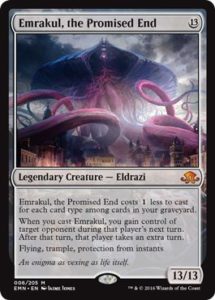
The revisit to Innistrad wasn’t as much fun as the first. Guess you really can’t go home again. The Eldrazi only partly played a role in making the Innistrad not as fun. I actually enjoyed the story and some of the weird creatures that came as a result. It was just too much of a good thing perhaps. That’s what I fear from a Return to Return to Ravnica. This will be the third time on the plane in just over a decade of time. What could they possibly have that will make it worth it? I suppose time will tell.
3 down, 2 to go. Next time, we visit the 3 newer planes introduced recently; Kaladesh, Amonkhet, and Ixalan. After that, it is Dominaria and Return to Ravnica to finish the series. I hope you all have been enjoying reading this as much as I’ve been writing it. See you in a couple of days.
